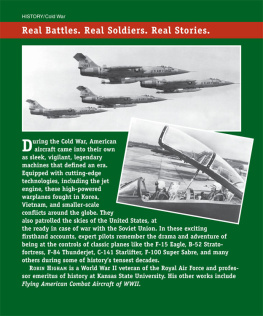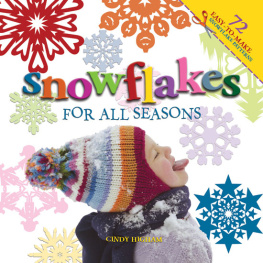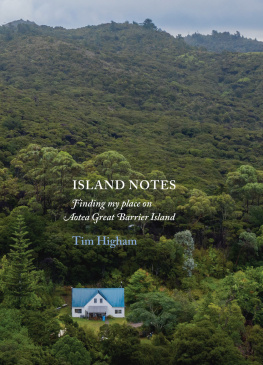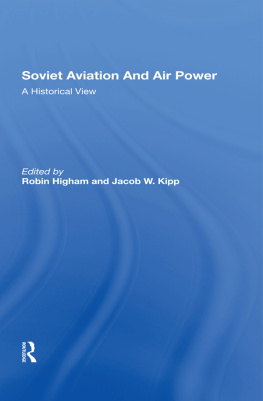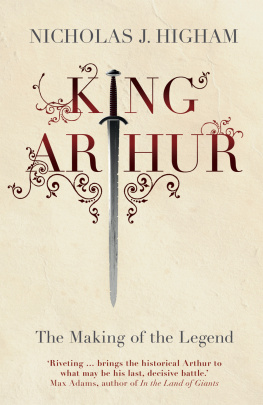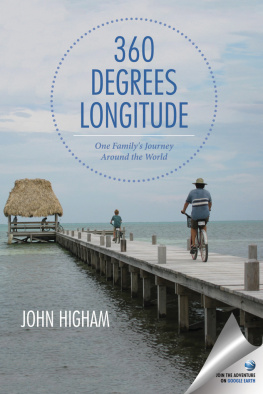Tom Higham - The World Before Us
Here you can read online Tom Higham - The World Before Us full text of the book (entire story) in english for free. Download pdf and epub, get meaning, cover and reviews about this ebook. year: 2021, publisher: Yale University Press, genre: Romance novel. Description of the work, (preface) as well as reviews are available. Best literature library LitArk.com created for fans of good reading and offers a wide selection of genres:
Romance novel
Science fiction
Adventure
Detective
Science
History
Home and family
Prose
Art
Politics
Computer
Non-fiction
Religion
Business
Children
Humor
Choose a favorite category and find really read worthwhile books. Enjoy immersion in the world of imagination, feel the emotions of the characters or learn something new for yourself, make an fascinating discovery.

- Book:The World Before Us
- Author:
- Publisher:Yale University Press
- Genre:
- Year:2021
- Rating:5 / 5
- Favourites:Add to favourites
- Your mark:
- 100
- 1
- 2
- 3
- 4
- 5
The World Before Us: summary, description and annotation
We offer to read an annotation, description, summary or preface (depends on what the author of the book "The World Before Us" wrote himself). If you haven't found the necessary information about the book — write in the comments, we will try to find it.
Tom Higham: author's other books
Who wrote The World Before Us? Find out the surname, the name of the author of the book and a list of all author's works by series.
The World Before Us — read online for free the complete book (whole text) full work
Below is the text of the book, divided by pages. System saving the place of the last page read, allows you to conveniently read the book "The World Before Us" online for free, without having to search again every time where you left off. Put a bookmark, and you can go to the page where you finished reading at any time.
Font size:
Interval:
Bookmark:
The World Before Us
Our knowledge of where humanity came from has been revolutionized in the last ten years, and Tom Higham has been in the front lines for many of the biggest breakthroughs. The World Before Us is a fascinating and entertaining account, which tells us not only of how we began, but also where we might be going. If you read one book on human origins, this should be it Ian Morris, author of Why the West Rules For Now
The application of new genetic science to pre-history is analogous to how the telescope transformed astronomy. Tom Higham, one of the worlds leading scientists in the field, brings us to the frontier of recent discoveries with a book that is both gripping and fun Paul Collier, author of The Bottom Billion
Opening up entirely new perspectives on the early history of humanity, this exciting book shows that we now have a revolutionary new tool for reconstructing the human past: DNA from minute pieces of tooth and bone, and even from the dirt on the floor of caves. Everyone studying history should be taking a course in DNA David Abulafia, author of The Boundless Sea
The who, what, where, when and how of human evolution, from one of the worlds experts on the dating of prehistoric fossils. Tom Higham blends evidence from archaeology, palaeontology and genetics to reveal a rich family album of our closest relatives, a cast of characters including cave-dwelling Neanderthals, mountain-adapted wanderers and island-living Hobbits, which thrived before Homo sapiens took over the world Steve Brusatte, author of The Rise and Fall of the Dinosaurs
Tom Higham has been at the pulsating centre of the close collaboration between archaeologists and geneticists that in the last few years discovered our previously unknown cousins the Denisovans and revealed the lost world in which they, Neanderthals and modern humans interacted and interbred. His thrilling book gives us a court-side view of this scientific revolution David Reich, author of Who We Are and How We Got Here
A brilliant distillation of the ideas and discoveries revolutionizing our understanding of human evolution. Tom Higham, one of the leaders of the revolution and the cutting-edge science on which it is based, introduces us to a complex world of many human species, whose genes and deeds live on in us today Chris Gosden, author of The History of Magic
From lab bench to trench, The World Before Us offers a personal tour of the newest science in palaeoanthropology. Highams three decades working on some of the most important and remarkable fossils ever found imbues his account with fascinating detail Rebecca Wragg Sykes, author of Kindred
The story of our early ancestors as it has never been told before, written with clarity and enthusiasm by one of those involved. Essential reading for all Barry Cunliffe, author of The Scythians
This brilliant book on our forebears and, indeed, our own world makes cutting-edge science easily understandable and is profoundly entertaining at the same time. This is a magnificent tour de force by a leading expert written for you and I Brian Fagan, author of World Prehistory
The New Science Behind Our Human Origins
TOM HIGHAM

First published by Penguin Books Limited in the United Kingdom and by Yale University Press in the United States in 2021.
Copyright Tom Higham, 2021 The moral right of the author has been asserted. This book may not be reproduced, in whole or in part, including illustrations, in any form (beyond that copying permitted by Sections 107 and 108 of the U.S. Copyright Law and except by reviewers for the public press), without written permission from the publishers.
Yale University Press books may be purchased in quantity for educational, business, or promotional use. For information, please e-mail (U.K. office).
Set in 12/14.75 pt Bembo Book MT Std. Typeset by Jouve (UK), Milton Keynes. Printed in the United States of America.
Library of Congress Control Number: 2021936459 ISBN 978-0-300-25922-3 (hardcover : alk. paper)
This paper meets the requirements of ANSI/NISO Z39.48-1992 (Permanence of Paper).
For Joe, Miriam, Angelo and Elektra
Dates are often mentioned in this book, so a quick word on general terminology might be useful.
The period popularly known as the Stone Age dates from approximately 3.3 million years ago until around 5,000 years ago, and thus covers more than 99 per cent of human technological prehistory. It is divided into three parts: the Old Stone Age, or Palaeolithic, the Middle Stone Age, or Mesolithic, and the New Stone Age or Neolithic. The Old Stone Age is further divided in the Lower, Middle, Upper and Late Palaeolithic periods.
The dating of these periods differs in different parts of the world.
The Palaeolithic begins with the earliest stone tools, which currently are dated at around 3.3 million years ago in Africa, at the Kenyan site of Lomekwi. The Middle Palaeolithic begins 300350,000 years ago and ends broadly between 40,000 and 50,000 years ago depending on which region of the world is being considered. It embraces the period of the Neanderthals as well as the development of tools made using a new approach called Levallois, in which stone tools became markedly more efficient in terms of the size of their cutting edge. The Upper Palaeolithic follows and has often been exclusively linked with our own species, although this is not likely to be strictly true any more.
This book focuses in the main on the Middle and Upper Palaeolithic, and importantly, on the nature of the transition between the two.
The Mesolithic period starts around 15,000 years ago, at the end of a long period of extreme glacial cold known as the Ice Age. As the climate of the world warmed, a range of new habitats opened up and humans moved into these environments armed with distinct new stone-tool technologies. From these new environments they exploited a wider spectrum of food resources such as small mammals and marine foods.
The Neolithic, which begins around 10,000 BC, is characterized by the development of agriculture, which spread from several major centres depending on the crops and animals that were domesticated. The Neolithic is often associated with polished stone tools, a sedentary lifestyle, rather than hunting and gathering, and ceramics or pottery.
Monday 22 June 2015 at 9:10 am. One of the great moments of my life. I was in one of the laboratories at the Research Lab for Archaeology at Oxford University, where I have worked for the last twenty years. With one of my students, Samantha Brown, I was about to pick up for the first time the tiny bone of a human being who lived around 120,000 years ago.
We had found it, one bone amongst tens of thousands of other fragments, using a brilliant new scientific approach called ZooMS, which is an acronym for zooarchaeology by mass spectrometry. Sams persistence over weeks, in taking minute samples from over 1,500 tiny bone fragments for analysis from the site of Denisova Cave in Siberia, had paid off.
The bone was tiny, only 2.4cm long, but, as we later discovered, very, very special. It is, so far, the only existing bodily remnant of a person who was a genetic hybrid: the offspring of two different groups of humans. This young womans mother was a Neanderthal and her father a Denisovan, a distinct group of humans that was discovered only in 2010 by geneticists at the Max Planck Institute in Germany when analysing material from the Denisova site. Think of them as our distant cousins, and the closer cousins of Neanderthals, who lived mainly in Europe and the Levant between 250,000 and 40,000 years ago.
Next pageFont size:
Interval:
Bookmark:
Similar books «The World Before Us»
Look at similar books to The World Before Us. We have selected literature similar in name and meaning in the hope of providing readers with more options to find new, interesting, not yet read works.
Discussion, reviews of the book The World Before Us and just readers' own opinions. Leave your comments, write what you think about the work, its meaning or the main characters. Specify what exactly you liked and what you didn't like, and why you think so.



